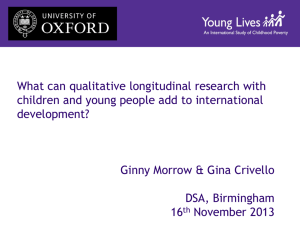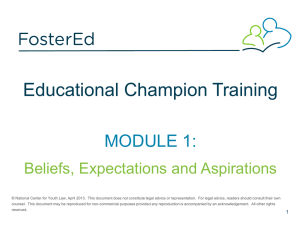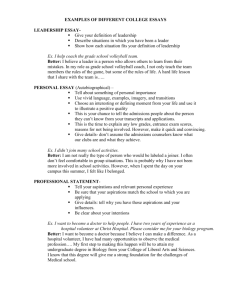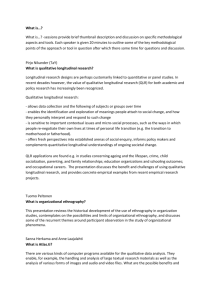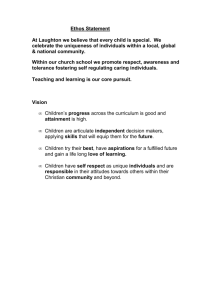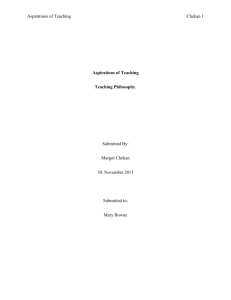Child development and international development
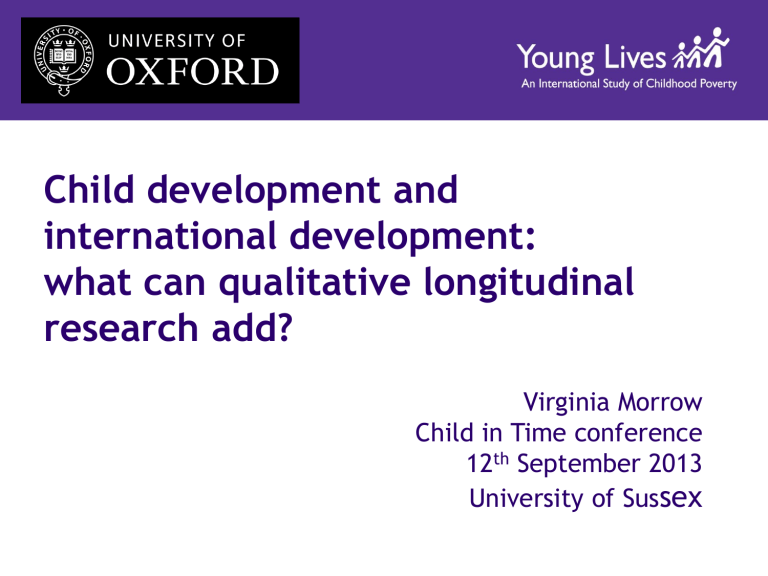
Child development and international development: what can qualitative longitudinal research add?
Virginia Morrow
Child in Time conference
12 th September 2013
University of Sus sex
Background: Young Lives
• Longitudinal study of childhood poverty -Ethiopia,
Andhra Pradesh, India, Peru and Vietnam
• 12,000 children 2001-2017 (MDG context)
• Survey every 3 years
• Qualitative research with ‘nested’ sample n=200
• Improve the understanding of causes and consequences of childhood poverty over lifetime of
MDGs -
• Funded by UK Department for International
Development
• Examine how policies affect children
Data Collection
Round Year YC Ages
Round 1
Round 2
Qual-1
Qual-2
Round 3
Qual-3
Round 4
Qual-4
Round 5
2002
2006-7
2007
2008
2009
2011
2013
2014
2016
6-18 months
5-6 years
5-6
6-7
7-8 years
9-10
11-12 years
12-13
14-15 years
OC Ages
7-8 years
12-13 years
12-13
13-14
14-15 years
16-17
18-19 years
19-20
21-22 years
Qualitative longitudinal research: themes
• Daily lives and well-being of children and young people in a selection of communities
• Capture changes during childhood and
transitions to adulthood
• How policies and services (school, health) are experienced by children (and caregivers)
• Data collection: 2007, 2008, 2010/11, 2014
Thinking about time in international development and child development
• Temporality in development studies: goals of development are change and sustainability – but approaches to research in development are crosssectional/snapshot = disjunction?
• What is the status of qualitative research in development knowledge?
• Marginality of children and young people’s experiences
• Acceptance of developmental psychology approaches (ages/stages)
Haymanot, rural Ethiopia
• Illustrates connections between poverty, time, school/work, and marriage
• 2006, age 11, father had ‘died’, she had been ill, missed school, but recovered after staying with an aunt. Moved back to look after her mother.
• 2007, aged 12, despondent and worried, caring for her sick mother, drought and food shortages but says she wants to work.
• ‘We used to have new clothes, chicken, meat and areke. My mother was not sick at that time and she used to work…’
• Now she worries about providing for her family:
‘I will buy clothes for them, I wash their clothes and prepares their food…. I don’t want to be worried about my life’
In 2011, Haymanot is married
• Family-arranged wedding ‘I stopped doing paid work…’.
• Living with her husband near her mother, in a better house, with a ‘better life … because we have enough farm products’.
• Hopes to continue school – ‘my husband has to allow me’
• Anticipates she ‘will be at home doing household chores, perhaps having a child… because my husband wants a child’ in 3 years time.
Exploring migration aspirations over time
• Example: Peru
• 2002-2009, 1 in 4 YL households moved.
• Persistent social and economic inequality; decades long rural urban migration
• QLR: to explore how aspirations change across time-space
Biographical change (between ages 12-16)
How earlier aspirations relate to ‘migration outcomes’
How changing circumstances impact on aspirations (motherhood, sibling migration, parental death, etc.)
Connections between different temporal elements in narratives of imagined futures
Past, present, future: (eg, the way future projections influence present actions and practices)
Generational time: ‘linked lives’ and histories, intergenerational poverty, generational shifts (eg, changing relations of child-adult dependency)
Social becoming: underpinning aspirations are notions of ‘progress’, ‘backwardness’,
‘the future’
(Forthcoming: ‘There’s no future here’: Childhood, migration aspirations and inequality in
Peru’, Gina Crivello)
Concluding thoughts
• QLR illustrates the changing contexts of children’s lives
• Interconnections with family members, interdependency, support for family of origin
• And how these shape children’s decisions
• QLR is a powerful way of linking individual biographies with structural factors
• Understanding ‘dynamics of social and institutional change and their relationship with individual action and experience’ (Locke & Lloyd
Sherlock 2011 p1149).
